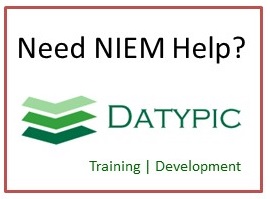om:TimeSeriesObsType
Observation, in which the result is a compact representation of a time-instant coverage
which samples a property of the feature of interest at different times
resultDefinition property contains value record schema, used to parse value, and an indication of the
encoding
Complex type information
Content
- Sequence [1..1]
- gml:metaDataProperty [0..*] Contains or refers to a metadata package that contains metadata properties.
- gml:description [0..1] Contains a simple text description of the object, or refers to an external description.
- Choice [0..*]
- gml:name Label for the object, normally a descriptive name. An object may have several names, typically assigned by different authorities. The authority for a name is indicated by the value of its (optional) codeSpace attribute. The name may or may not be unique, as determined by the rules of the organization responsible for the codeSpace.
- gml:csName The name by which this coordinate system is identified.
- gml:coordinateOperationName The name by which this coordinate operation is identified.
- gml:methodName The name by which this operation method is identified.
- gml:parameterName The name by which this operation parameter is identified.
- gml:groupName The name by which this operation parameter group is identified.
- gml:datumName The name by which this datum is identified.
- gml:meridianName The name by which this prime meridian is identified. The meridianName most common value is Greenwich, and that value shall be used when the greenwichLongitude value is zero.
- gml:ellipsoidName The name by which this ellipsoid is identified.
- gml:srsName The name by which this reference system is identified.
- om:eventParameter [0..*] Generic event parameter or property
- om:time [1..1] The Time when the event occurred (mandatory).
This may be given
* in absolute terms as a TimeInstant or TimePeriod
* in approximate terms or relative to an absolute position using the indeterminatePosition attribute
* or using a TimeTopology element (TimeEdge or TimeNode), which provides the option of giving a time relative
to other edges or nodes, either directly (gml) or indirectly (xmml)
* as a TimeGeometricComplex if it is a recurring or repeating event
- om:precedingEvent [0..*] Description of, or pointer to, preceding
event(s)
- om:followingEvent [0..*] Description of, or pointer to, following event(s)
- om:responsible [0..1] Person or organisation responsible for the event, if applicable.
The nature of the responsibility (i.e. the role of the party with respect to the event) may be
indicated using the xlink:arcrole attribute.
Examples of roles are operator, sponsor, requestor, provider, processor,
etc.
- om:quality [0..*] Instance-specific quality assessment or measure.
Allow multiple quality measures if required.
- om:procedure [1..1] Link to a description of the procedure or process used to
determine the result.
This may be
- a generic procedure or procedure type in which case all event-specific parameters are
associated with the observation event, or
- a procedure instance with event specific parameters bound to the
procedure.
- om:observedProperty [1..1] Link to a description of the property or phenomenon whose value
is being described or estimated through observation
for example "wavelength", "grass-species", "power", "intensity in the waveband xy",
etc.
It is this feature-property that provides the (semantic) type of the observation.
Note that the description of the phenomenon may be quite specific and
constrained.
In general the precise details of the constraints describing the observe properties
require attention to the procedure used in making the observation:
e.g. an optical sensor typically has a wavelength-dependent response.
This property may be provided for client convenience, to allow comparison
between and aggregation of observations of the same property made using different procedures.
- om:featureOfInterest [1..1] the Feature regarding which the observations are being made,
sometimes called the target or subject of the observation, such as a specimen,
station, tract, mountain, pixel, etc.
The spatial properties (location) of this feature of interest are typically of most
interest for spatial analysis of the observation result.
- om:resultDefinition [1..1]
- om:result [1..1]
Attributes
Used by
Type inheritance chain



